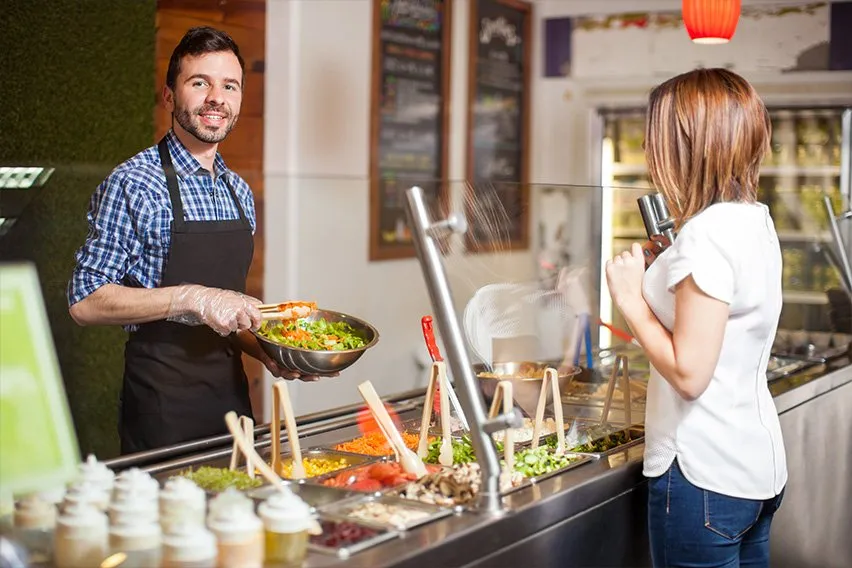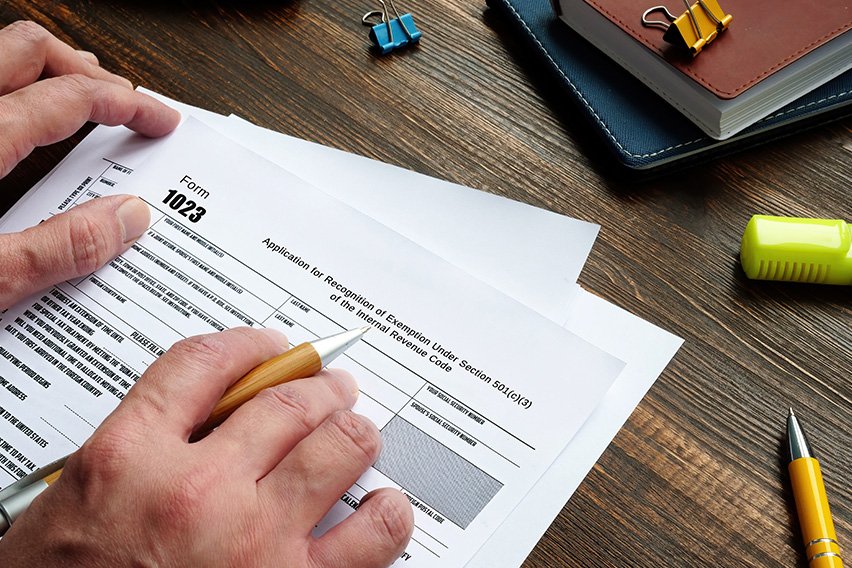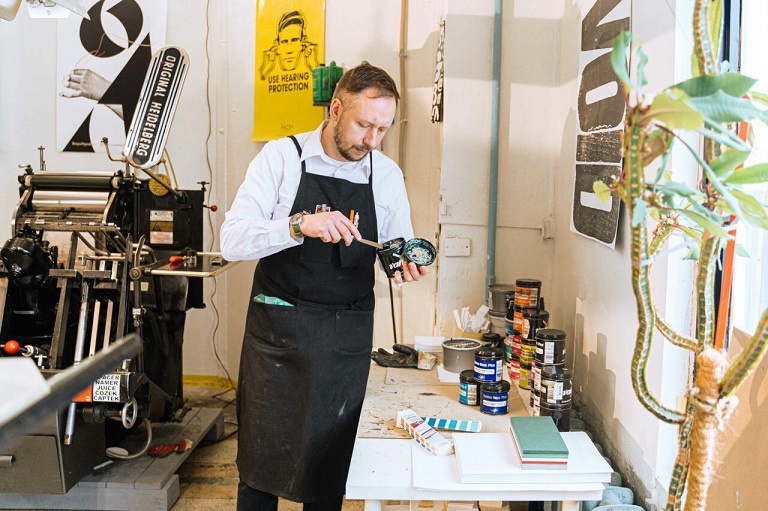How to Estimate Catering Jobs in Canada: A Pricing Guide for Small Businesses

It can be a challenge to convert leads into prospects as a catering business. And once you do, you still need to balance landing new clients with staying profitable. We get it.
To help, we’ve put together a pricing guide that breaks down accurate ways to estimate food and alcohol, rental prices and labour costs. Plus, we made sure to include ways to help manage your overhead costs so your catering business can have a positive cash flow.
If you want a little more assistance, try FreshBooks’ online estimating software to help create and send estimates to clients. And when you’re finished, you can easily convert them into invoices.
In this article, we’ll cover:
What’s the Average Hourly Rate for a Caterer?
How Should You Calculate the Cost of Food Per Person?
What’s the Average Cost of a Buffet at a Wedding?
7 Steps for Creating an Accurate Catering Pricing Guide
What’s the Average Hourly Rate for a Caterer?
Determining the right hourly wage is going to heavily depend on the type of catering service your business focuses on. Is it primarily weddings? What about corporate events and other business functions? Perhaps its catering services for a broad range of community events.
The average hourly rate is going to fluctuate depending on the type of service you offer since different catering functions are going to be more or less expensive. Plus, your location is also going to play a big role. For example, a caterer in a suburban area will likely earn less compared to caterers in major cities like Toronto, Vancouver or Montreal.
It’s important to keep all of that in mind, but according to Indeed, the average hourly wage for a caterer across Canada is $18.51.

How Should You Calculate the Cost of Food Per Person?
One of the first steps you should take is determining the cost of the ingredients needed for the specific catering event. Next, you need to know how many guests are attending. From here you can divide the total ingredient costs by the number of guests that are attending.
Keep in mind that it’s always easier to determine this cost if you’re doing a plated dinner. This is since you would be able to more accurately determine how much food will get consumed.
So, let’s say that you’re going to provide a plated dinner for 70 guests. Knowing this information, you’ve gotten the ingredients you need and the total cost was $800. To calculate the cost of the food per person, you can do it like this:
$800 / 70 guests = $11.43 per person
It’s worth noting that this is the base cost and doesn’t include any service fees or your business markup.
What’s the Average Cost of a Buffet at a Wedding?
Typically, catering for a wedding will cost more compared to other types of catering events. Why? Because there will usually be more people in attendance and guests will get served a high-quality meal.
According to Roaming Hunger, the average cost to cater a wedding is around $85 per person, and this includes food and drinks.
But, having a simple buffet or a food station can see the cost reduced, ranging anywhere from $25 to $65 per person.
7 Steps for Creating an Accurate Catering Pricing Guide
Below you will find 7 steps that outline some specific information to gather and include to create an accurate price guide for your next catering job. You’ll ensure that you account for all the costs required to deliver an exceptional experience, but also make sure your business stays profitable.
Step 1: Account for the Number of Guests
One of the biggest factors to account for when estimating a catering job is how many people are going to be in attendance. Speak to the client or whoever is holding the event and have them provide you with a guest count.
Once you have a better idea of how many guests will attend the event, you can move on to step 2 and start to determine the ingredients needed and the type of service you’ll provide.
Step 2: Determine the Food Service
Another factor that will impact your pricing guide is the menu choice and type of service the client chooses. For example, something like an hors d’oeuvres buffet will usually be a lower cost compared to a plated dinner.
You can also discuss with the client other requirements such as the type of glassware or whether or not fancier supplies are needed, like china plates. Plus, make sure you discuss any other special requests or additional items. Details like dietary restrictions are an important point to know so you can ensure the food service reflects what’s needed.
Once you have all of the relevant information from the client, you can provide and review potential menus with them. Once the menu gets approved you can start to gather all the needed ingredients.
Step 3: Incorporate the Food Costs
Now that you know the menu the client wants and they’ve approved it, the next step is to compile a detailed ingredient list. Be sure to include specific quantities and price out any of the special ingredients needed and anything else that’s been requested.
Usually, figuring out ingredients for a plated meal is much easier compared to a general buffet. For a set meal, you can approximate that each guest will consume an appetizer, around four to six ounces of meat, a side dish, and a dessert.
Here are a few rough estimate examples to help determine food prices per person based on meal type:
- Cold buffet – $17 per person
- Hot buffet – $25 per person
- Business breakfast – $30 per person
- Three-course meal – $50 per person
It’s worth mentioning again that some of these prices can vary depending on if you’re located in a bigger, more metropolitan city. And, depending on the number of guests attending, the cost of ingredients and the labour costs can cause the price to be higher or lower. For example, the average cost per person for a buffet in Toronto can be around $20 compared to $17.50 in Vancouver, according to Bark.
Plus, if you need to travel to the catering event then you can also include travel costs in your pricing.
Step 4: Time to Add the Cost of Supplies
Figuring out the guest count and the cost of ingredients is only the start. But, now that you know that information, you can start to consider the extra items that need to get included.
For example:
- Napkins, tablecloths and other types of linens
- Chairs
- Glassware
- Flatware
- Utensils
- Special equipment
- Chafing dishes
Once you know exactly what you’ll need you can add these costs to the overall estimate.
Step 5: Include the Bar Costs
The bar costs at a catering event can add up quickly, so it’s important to establish the type of bar your client wants beforehand. This way, things won’t get out of control and your client won’t be surprised by a cost they weren’t expecting.
It’s worth having this discussion with the client to see how they would like to proceed. For example, they might decide to purchase their own alcohol if the venue allows for it or hire a licensed bartender.
Once you know the direction, you can start to price out the cost of both alcoholic and nonalcoholic beverages. Be sure to include other necessities such as cups, glasses, ice, and anything else that might be needed.
According to Joy, you can estimate each guest will consume around one drink per hour. So, if the catering event is three hours long, you can estimate a total of three drinks per guest.
As an example, let’s say the event will have a total of 100 guests in attendance, meaning you can account for roughly 300 total servings.
From here, you can break it down even further to allocate a specific percentage of beverage types for 300 servings:
- 60% wine = 180 total servings
- 20% beer – 60 total servings
- 20% liquor – 60 total servings
Once you determine the direction the bar will go in and figure out the number of servings, you can price the bar costs accordingly and add them to the estimate.

Step 6: Be Sure to Include a Service Charge
There are going to be a few other moving parts to the catering event other than the food, supply and bar costs.
Here are a few of the things you can include in your service charge.
- Labour costs – Determine how many servers and assistants you’re going to need to help make sure the event runs smoothly
- Gratuity – Depending on where you’re located, including gratuity in the service charge can be a common practice and it’s typically around 15%
- Profit margin – Sometimes this can be a flat fee and other times you might include a specific percentage, such as 25%. When considering profit margin make sure you do what you can to try and accommodate the client’s budget. That said, being flexible doesn’t mean sacrificing the profit your catering business should earn for the services provided.
Another element to consider is your overhead costs. Take into account the areas needed to operate your business, such as the cost of rent if you have an office, equipment rentals, insurance and utilities.
As an example, let’s say you have a monthly total overhead of $5,000. If your catering business does 10 jobs per month, this means charging $500 per job will cover any overhead costs.
Step 7. Complete the Estimate
Now that you have gone through steps one to six, you should have all of the information and costs needed to provide an accurate estimate to your client.
If you want to be a bit more competitive to try and land the job you can always quote a lower price. However, don’t estimate too low so that you don’t earn a profit. It can sometimes be a challenge to balance your business needs with the client’s budget, but make sure you do what’s best for everyone involved.
Key Takeaways
There are a lot of moving parts to consider when estimating a catering job. Everything from the number of guests, the ingredients needed, bar costs, supply costs and service charges. Plus, you need to ensure you have enough staff on hand so the event runs smoothly and there are no speed bumps.
One of the best things you can do before even getting started is to find out the client’s budget. This way, you’ll immediately have a better sense as to what you can or cannot provide. For example, if the client has a smaller budget then something such as a buffet-style catering event might be most beneficial.
For clients with a higher budget, a plated dinner can provide some more flexible options for both the client and the guests in attendance.
Use the seven steps we outlined in this guide to create the most accurate pricing guide for your next catering job. You’ll have the best opportunity to generate an estimate the client will be happy with while also generating a profit for your business.
Did you enjoy reading this guide? Head over to our resource hub for more great content!
RELATED ARTICLES

 What to Know for Legally Starting a Business in Canada
What to Know for Legally Starting a Business in Canada 6 Steps for Estimating a Painting Job in Canada
6 Steps for Estimating a Painting Job in Canada 5 Expense Tracker Apps for 2025
5 Expense Tracker Apps for 2025 Tax Exemption Requirements for Organizations
Tax Exemption Requirements for Organizations How Much Cash Can You Deposit?
How Much Cash Can You Deposit?